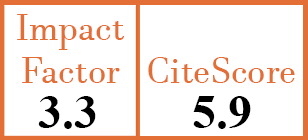Full Papers
The relationship between NETosis findings and disease activity in Behçet's disease: an exploratory study
E. Bektas1, R. Deniz2, Z. Emrence3, S. Sirma Ekmekci4, N. Abaci5, S. Amikishiyev6, Y. Yalcinkaya7, B. Artim Esen8, M. Inanc9, A. Gül10
- Department of Internal Medicine, Istanbul Faculty of Medicine, Istanbul University, Istanbul, Turkey. erdmbektas@gmail.com
- Department of Rheumatology, Basaksehir Cam and Sakura City Hospital, University of Health Sciences, Istanbul, Turkey.
- Department of Genetics, Aziz Sancar Institute of Experimental Medicine, Istanbul University, Istanbul, Turkey.
- Department of Genetics, Aziz Sancar Institute of Experimental Medicine, Istanbul University, Istanbul, Turkey.
- Department of Genetics, Aziz Sancar Institute of Experimental Medicine, Istanbul University, Istanbul, Turkey.
- Division of Rheumatology, Department of Internal Medicine, Istanbul Faculty of Medicine, Istanbul University, Istanbul, Turkey.
- Division of Rheumatology, Department of Internal Medicine, Istanbul Faculty of Medicine, Istanbul University, Istanbul, Turkey.
- Division of Rheumatology, Department of Internal Medicine, Istanbul Faculty of Medicine, Istanbul University, Istanbul, Turkey.
- Division of Rheumatology, Department of Internal Medicine, Istanbul Faculty of Medicine, Istanbul University, Istanbul, Turkey.
- Division of Rheumatology, Department of Internal Medicine, Istanbul Faculty of Medicine, Istanbul University, Istanbul, Turkey. agul@istanbul.edu.tr
CER18801
2025 Vol.43, N°10
PI 1772, PF 1781
Full Papers
Free to view
(click on article PDF icon to read the article)
PMID: 41004322 [PubMed]
Received: 06/04/2025
Accepted : 09/09/2025
In Press: 24/09/2025
Published: 23/10/2025
Abstract
OBJECTIVES:
This study aimed to investigate the relationship between the neutrophil extracellular traps (NET) and NETosis findings and disease activity in Behçet disease (BD).
METHODS:
The study group consisted of 30 active BD patients and 10 healthy individuals as controls. Serum and saliva samples were collected from the patients during their active and remission periods. A subset of them were followed longitudinally. Serum and saliva cf-DNA, NE, MPO, and cit-H3 levels were measured as indirect NETosis findings, subsequently the results were adjusted based on the peripheral blood neutrophil counts. Unadjusted and adjusted levels of the NETosis findings were evaluated.
RESULTS:
In active BD, unadjusted serum cf-DNA and NE levels were significantly higher than in controls, whereas adjusted serum MPO and cit-H3 levels were found to be lower. In inactive BD, unadjusted serum NE levels remained elevated compared to controls, while unadjusted serum MPO, adjusted serum MPO, and adjusted serum cit-H3 levels were lower. No significant differences were observed in salivary NETosis findings between the patients and controls. Longitudinal follow-up revealed a decrease in both unadjusted serum cf-DNA and saliva cf-DNA levels in parallel with reduced clinical activity. Saliva and unadjusted serum cf-DNA showed a positive correlation with inflammatory markers, whereas adjusted serum MPO and cit-H3 correlated negatively.
CONCLUSIONS:
Indirect NETosis findings varied in relation to the systemic and/or local activity of BD patients. The changes after adjustment suggest that serum NETosis markers can be influenced by increased neutrophil turnover during the active phase of the disease.



